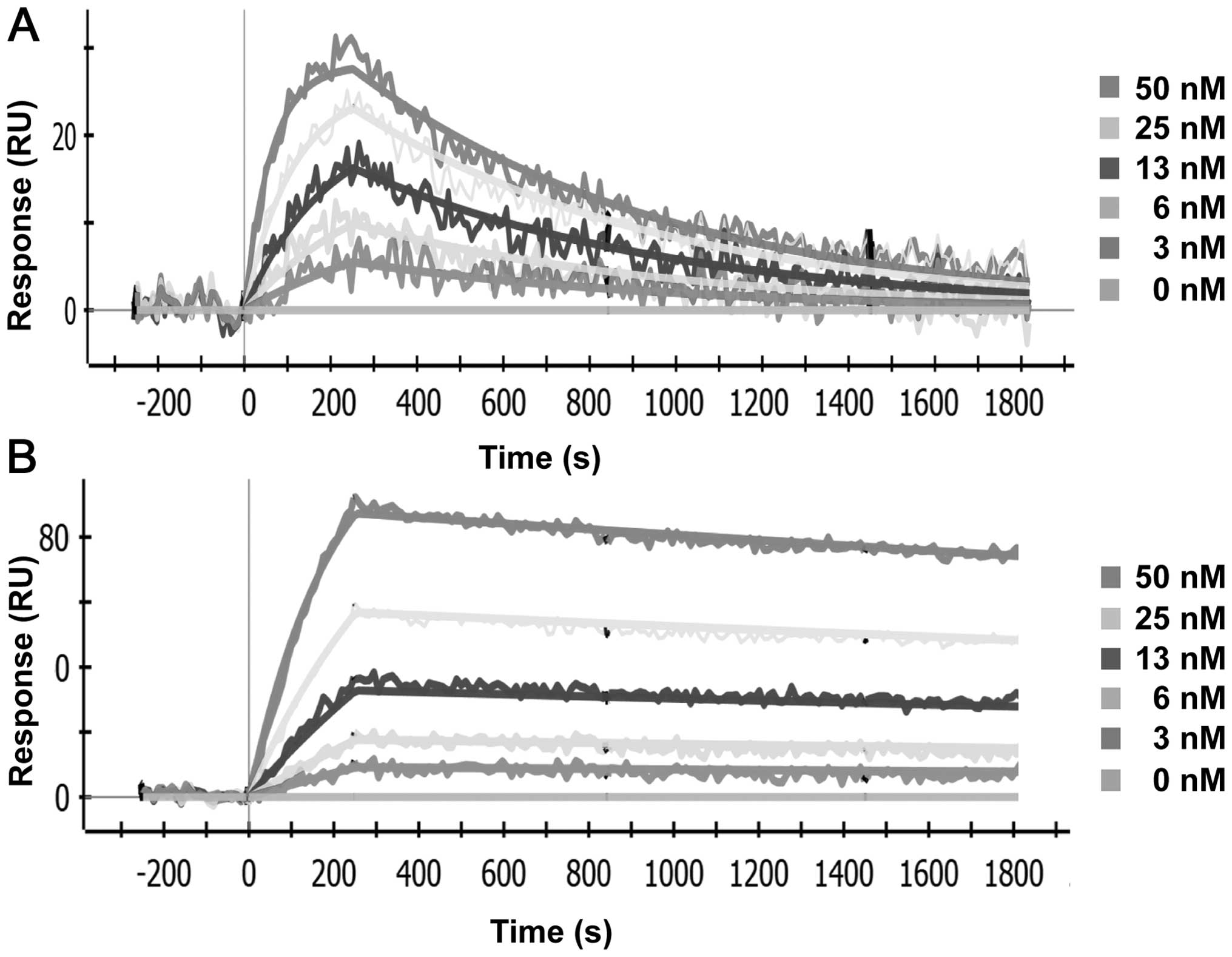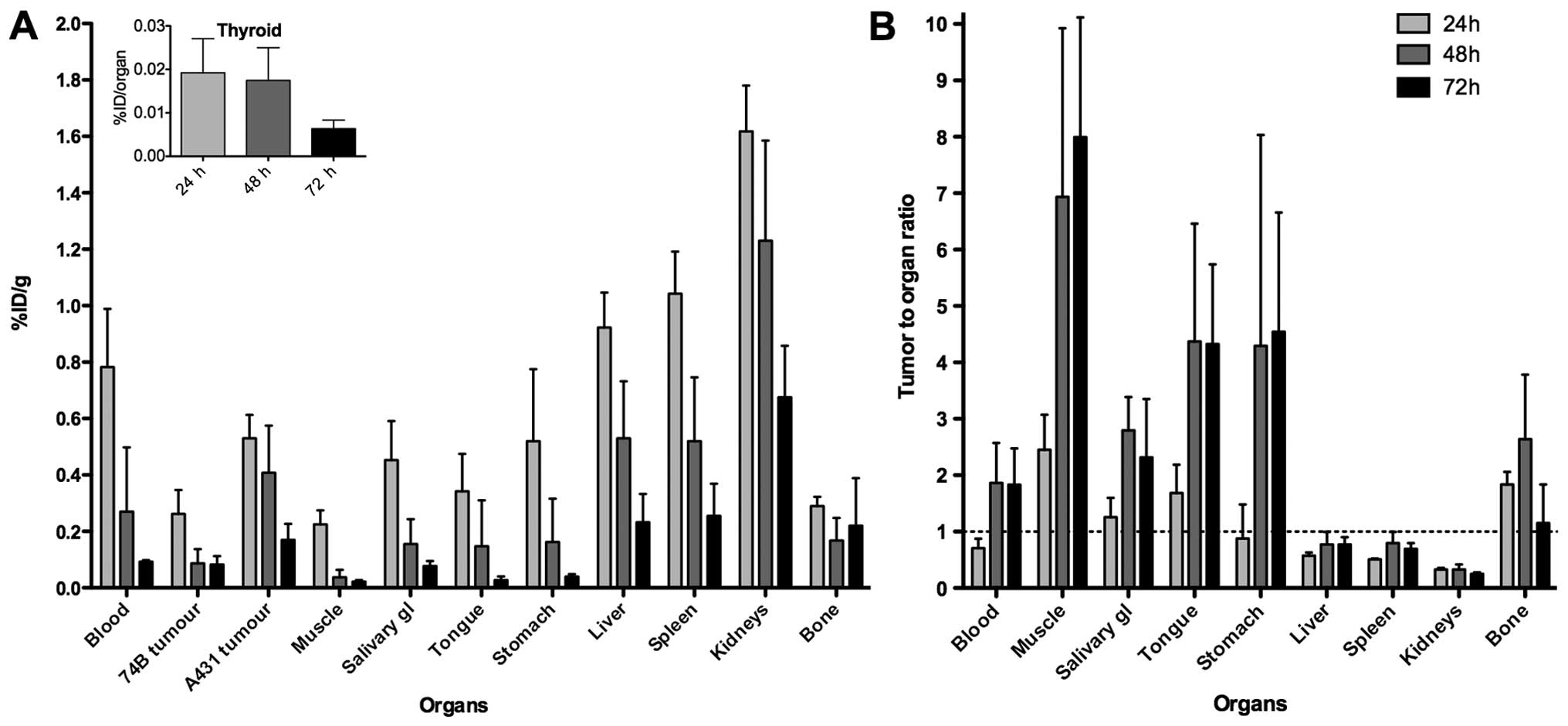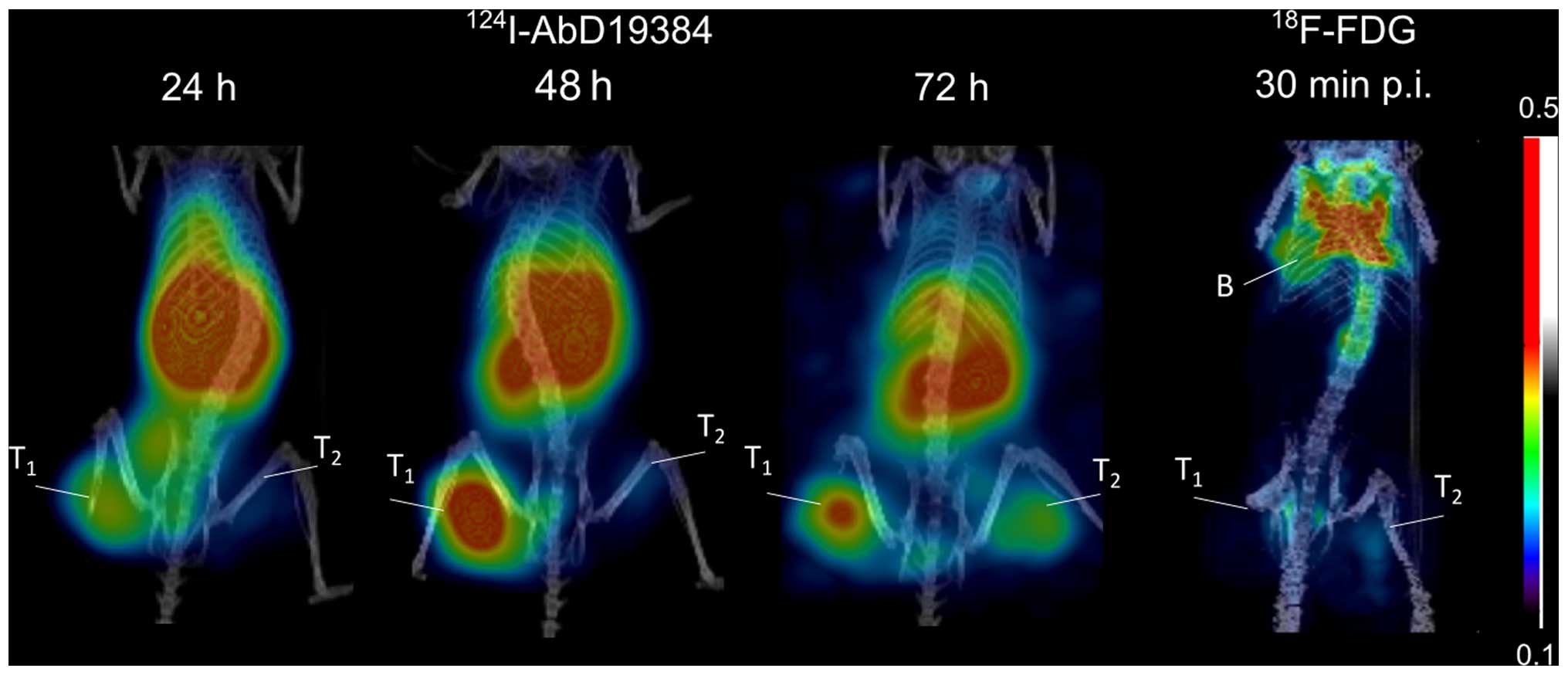Evaluation of a novel type of imaging probe based on a recombinant bivalent mini-antibody construct for detection of CD44v6-expressing squamous cell carcinoma
- Authors:
- Published online on: December 14, 2015 https://doi.org/10.3892/ijo.2015.3290
- Pages: 461-470
-
Copyright: © Haylock et al. This is an open access article distributed under the terms of Creative Commons Attribution License.
Metrics: Total
Views: 0 (Spandidos Publications: | PMC Statistics: )
Total PDF Downloads: 0 (Spandidos Publications: | PMC Statistics: )
Abstract
We have developed the CD44v6-targeting human bivalent antibody fragment AbD19384, an engineered recombinant human bivalent Fab antibody formed via dimerization of dHLX (synthetic double helix loop helix motif) domains, for potential use in antibody-based molecular imaging of squamous cell carcinoma in the head and neck region. This is a unique construct that has, to the best of our knowledge, never been assessed for molecular imaging in vivo before. The objective of the present study was to evaluate for the first time the in vitro and in vivo binding properties of radio-iodinated AbD19384, and to assess its utility as a targeting agent for molecular imaging of CD44v6-expressing tumors. Antigen specificity and binding properties were assessed in vitro. In vivo specificity and biodistribution of 125I-AbD19384 were next evaluated in tumor-bearing mice using a dual-tumor setup. Finally, AbD19384 was labeled with 124I, and its imaging properties were assessed by small animal PET/CT in tumor bearing mice, and compared with 2-deoxy-2-[18F]fluoro-D-glucose (18F-FDG). In vitro studies demonstrated CD44v6-specific binding with slow off-rate for AbD19384. A favorable biodistribution profile was seen in vivo, with tumor-specific uptake. Small animal PET/CT images of 124I-AbD19384 supported the results through clearly visible high CD44v6-expressing tumors and faintly visible low expressing tumors, with superior imaging properties compared to 18F-FDG. Tumor-to-blood ratios increased with time for the conjugate (assessed up to 72 h p.i.), although 48 h p.i. proved best for imaging. Biodistribution and small-animal PET studies demonstrated that the recombinant Fab-dHLX construct AbD19384 is a promising tracer for imaging of CD44v6 antigen expression in vivo, with the future aim to be used for individualized diagnosis and early detection of squamous cell carcinomas in the head and neck region. Furthermore, this proof-of-concept research established the feasibility of using recombinant Fab-dHLX constructs for in vivo imaging of tumor biomarkers.














